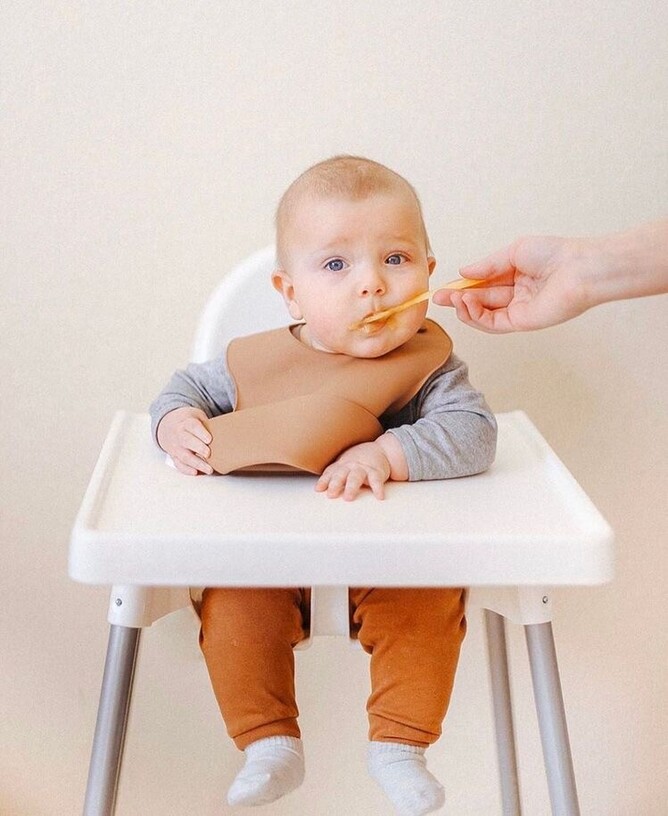Introducing solid foods to your baby is an exciting milestone in their development. As a parent, you want to make sure your little one is ready and receptive to this new adventure in eating. While each child is different, there are some common signs that can indicate your baby is prepared for the transition from exclusive breastfeeding or formula to the world of solids.
There are key developmental signs of readiness a baby must display before starting solids. Current guidelines state that complementary foods should not be introduced until the baby is 6 months and that breastmilk or formula still remains the primary source of nourishment for the first 12 months of a baby’s life. And although babies develop at different ages, 6 months as a guideline is when the largest majority of babies meet these readiness signs.
It is recommended to delay the introduction of solids until a baby has met all of the developmental signs of readiness. These signs include:
1. Can sit up unassisted
2. Lost the tongue thrust reflex
3. Developed pincer grasp
4. Shows signs of fullness
5. Eager to participate in mealtime
1) Can sit up without support (i.e. unassisted for a period of time)
One of the first and most crucial signs of readiness is when your baby can sit up without any assistance. When they can maintain a stable sitting position, it is an indicator that they have enough core strength to sit up and that their digestive system is mature enough to digest food. It shows that their core muscles are strong enough to handle the chewing and swallowing motions required for solid foods.
(2) Has lost the tongue thrust reflex
Babies will instinctively do this when something unfamiliar is placed in their mouth and will automatically push it out with their tongue. It’s a very clever safety mechanism that protects infants against choking. However, when they are ready for solids, this reflex diminishes, allowing them to move food to the back of their mouth and swallow it efficiently. When a baby can do this, it indicates that they are ready and willing to chew food.
(3) Developed a pincer grasp
This means that the baby has moved away from grabbing objects with the palm of the hand and now begins to grab with their thumb and forefinger. This fine motor skill is vital for self-feeding and exploring different textures and tastes.
NB:// This may not be exclusively used and likely developed a few months after starting solids, but it may be noticed in other everyday situations such as when picking toys from the ground.
(4) Able to turn head and indicate signs of fullness
This is a sign that baby can actively participate and properly express signs of fullness and disinterest such as turning their head away from the food and letting us know as parents that mealtime is over.
(5) Eager to participate in mealtimes
This is a sign that the baby is becoming more noticeably aware of food, this will be displayed as grabbing at food and showing a keen interest to actively participate in mealtimes. Babies are remarkably perceptive, and they love to imitate their parents or older siblings. If your little one shows enthusiasm and eagerness during mealtime, it's a strong indication that they are ready to join in on the family dining experience and explore new tastes.
NB:// This sign should only be considered once the above signs of readiness have been met as babies instinctively put a lot of objects in their mouth out of curiosity. We do not want to confuse this as a false sign of readiness.
--
If you've noticed these signs in your baby, then this indicates that your baby’s intricate system is ready and mature enough for the introduction of solid foods.
Remember that each baby develops at their own pace. There is no ‘set’ age to introduce complementary foods. Starting solids should not be rushed. It is recommended to wait until baby has showed all the developmental signs of readiness for both nutritional and developmental reasons before beginning their solid food journey.
Remember, every baby is unique, and it's essential to pay attention to their cues.
If you're unsure about the best approach to introduce solids or need guidance on creating a balanced and nutritious meal plan for your little one, book a FREE discovery call with Mother Nurtured here
Fiona Agius
Holistic Nutrition Consultant
@mothernurtured_








